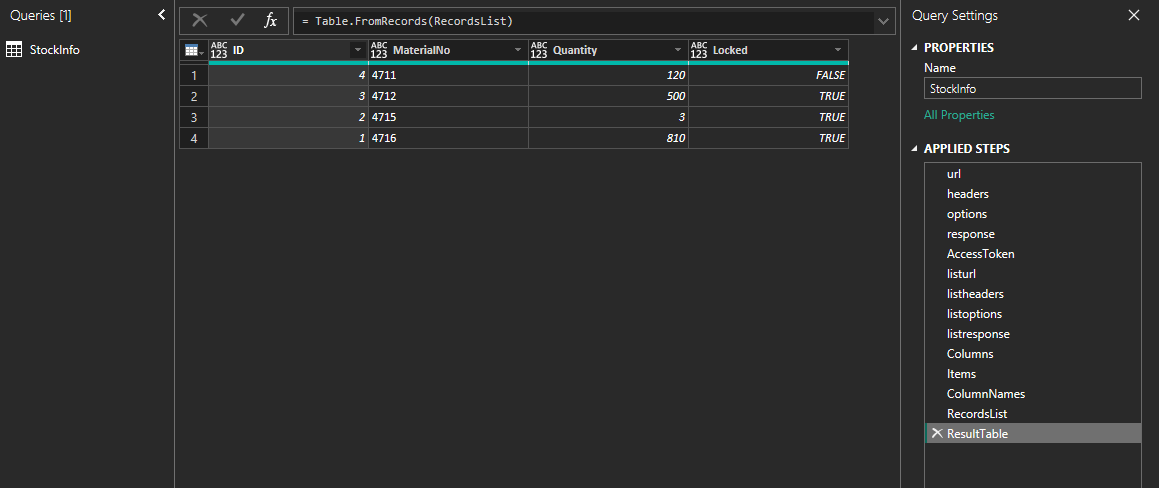Peakboard Hub is not only for Box-related administration tasks. It’s often used to store data. Whenever data is stored, data analysis is around the corner. That’s our topic for today. We will discuss how to use Power BI to consume data that’s stored inside Peakboard Hub.
Before reading this article, you need to understand the basics of the Peakboard Hub API, especially the following:
- How to get an API key.
- How to authenticate against the API backend.
- How to receive an access token.
- How to make the actual API call.
These basics are explained in our Peakboard Hub getting started article.
The example list we’ll use in today’s article is called StockInfo, as shown in the following screenshot. It contains three useful columns: MaterialNo, Quantity, and Locked.
The Power BI solution we will build is generic. You can take our finished command, change the name of the table, and it’ll work perfectly with any other table.
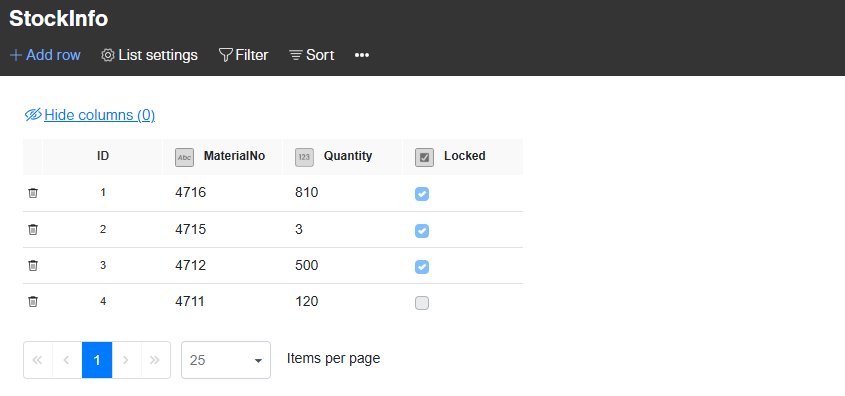
Set up the Power BI table
In Power BI, we create a new table with a blank query:
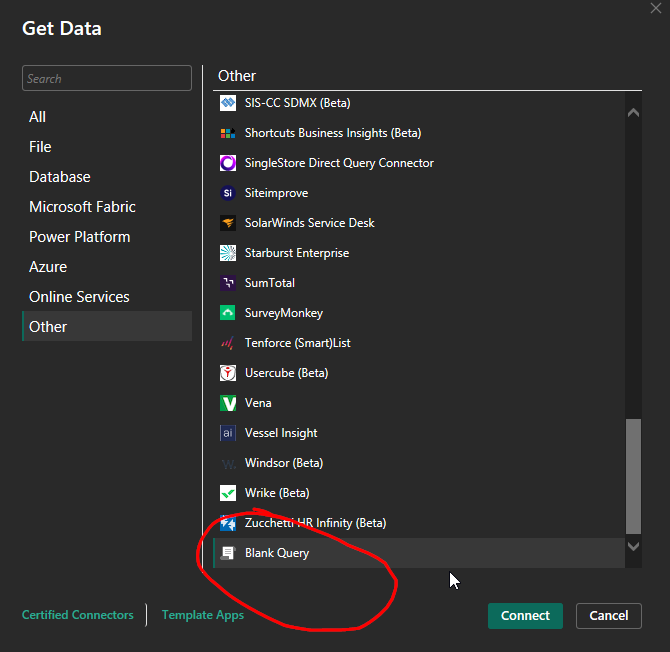
In the query, we switch to the advanced editor in order to edit the underlying command. This script contains exactly one command that must be modified for the API call. If you’re not familiar with these Power BI M queries, see this video about M queries.
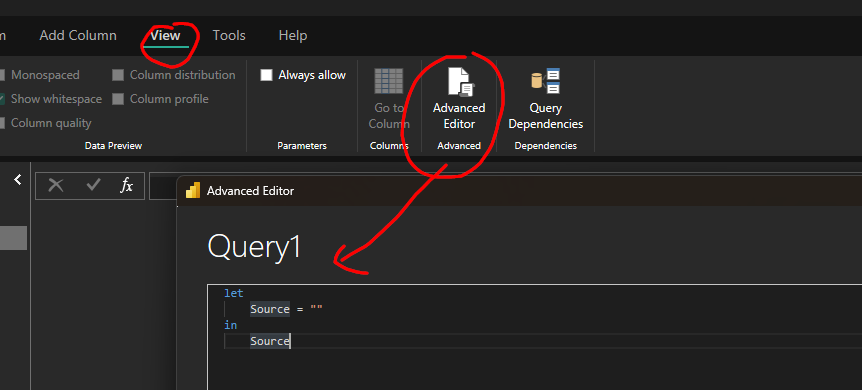
The command we are building will consist of 3 steps:
- Turn the API key into an access token.
- Get the list table data as a JSON string.
- Turn the JSON string into a table.
We will discuss each of the 3 parts separately.
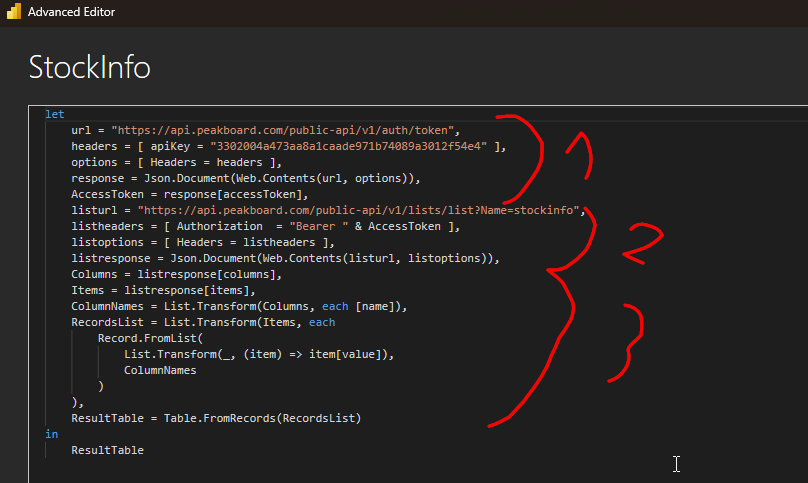
Turn the API key into an access token
url = "https://api.peakboard.com/public-api/v1/auth/token",
headers = [ apiKey = "3302004a473aa8a1caade971b74089a3012f54e4" ],
options = [ Headers = headers ],
response = Json.Document(Web.Contents(url, options)),
AccessToken = response[accessToken],- We specify the API endpoint for getting a token.
- We build a list of headers with a single entry: the API key.
- We place the list of headers into a list of options.
- We make an API call to the endpoint, with the list of options.
- The response represents a tree of objects in the JSON response string. We retrieve the access token from the response by using brackets.
Get the list table data as a JSON string
listurl = "https://api.peakboard.com/public-api/v1/lists/list?Name=stockinfo",
listheaders = [ Authorization = "Bearer " & AccessToken ],
listoptions = [ Headers = listheaders ],
listresponse = Json.Document(Web.Contents(listurl, listoptions)),The process for getting the data is similar to the process for getting the access token. But in this case, we need to provide an Authorization header instead of the API key. If the request succeeds, listresponse will contain the JSON string of the list data.
Turn the JSON string into a table
Here’s what the JSON string looks like. The metadata and the table are distributed over two arrays. The table data is stored as key-value pairs.
{
"columns": [
{
"name": "ID",
"elementName": "ID",
"type": "Number"
},
{
"name": "MaterialNo",
"elementName": "MaterialNo",
"type": "String"
},
{
"name": "Quantity",
"elementName": "Quantity",
"type": "Number"
},
{
"name": "Locked",
"elementName": "Locked",
"type": "Boolean"
}
],
"items": [
[
{
"column": "ID",
"value": 4
},
{
"column": "MaterialNo",
"value": "4716"
},
{
"column": "Quantity",
"value": 810
},
{
"column": "Locked",
"value": true
}
]
]
}Here’s the code for turning the string into a table:
Columns = listresponse[columns],
Items = listresponse[items],
ColumnNames = List.Transform(Columns, each [name]),
RecordsList = List.Transform(Items, each
Record.FromList(
List.Transform(_, (item) => item[value]),
ColumnNames
)
),
ResultTable = Table.FromRecords(RecordsList)- We convert the two arrays into two lists containing the headers and the items.
- We transform both lists with the
List.Transformfunction, which applies a function to each element of the list.- For the columns, we extract the
name. - For the data, we perform one more step. We get the value of a table cell by doing
item[value]. Then, we have a list of values. WithRecord.FromList, we transform this list of values into a single record.
- For the columns, we extract the
- We transform all the single records into a new table by using another
List.Transform.
Result
The command we created can be easily modified to work with any of your tables, by changing the API key and the name of the table.
Here’s the complete command, as a reference, and for copy and pasting:
let
url = "https://api.peakboard.com/public-api/v1/auth/token",
headers = [ apiKey = "3302004a473aa8a1caade971b74089a3012f54e4" ],
options = [ Headers = headers ],
response = Json.Document(Web.Contents(url, options)),
AccessToken = response[accessToken],
listurl = "https://api.peakboard.com/public-api/v1/lists/list?Name=stockinfo",
listheaders = [ Authorization = "Bearer " & AccessToken ],
listoptions = [ Headers = listheaders ],
listresponse = Json.Document(Web.Contents(listurl, listoptions)),
Columns = listresponse[columns],
Items = listresponse[items],
ColumnNames = List.Transform(Columns, each [name]),
RecordsList = List.Transform(Items, each
Record.FromList(
List.Transform(_, (item) => item[value]),
ColumnNames
)
),
ResultTable = Table.FromRecords(RecordsList)
in
ResultTableAnd here’s the final result in the Power BI preview:
